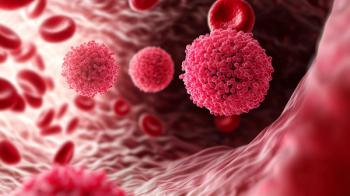
- April 2021
- Volume 89
- Issue 04
OTC Cases: Skin Health
Case 1: Melasma
Q: SP is a 37-year-old woman who wants information about nonprescription skin bleaching and spot fading products. She has noticed new brown spots on her cheeks, chin, and nose that a friend, who is a physician, identified as melasma. SP asks about hydroquinone, saying that she had heard mixed reviews about its safety and heard using it can increase the risk of developing cancer. What evidence can the pharmacist share with SP and how should she use hydroquinone if she purchases it?
A: Hydroquinone is a first-line choice for self-treatment of hyperpigmentation from melasma. Hydroquinone inhibits melanin production within the skin.1 The United States Food and Drug Administration (FDA) has gone back and forth regarding the safety of hydroquinone, because there had been concerns of increased risk for cancer and ochronosis, a bluish-black discoloration of skin upon application. Initially, the FDA considered setting a rule declaring that all nonprescription skin-lightening drug products are not recognized as effective and safe. Later, the FDA proposed that hydroquinone undergo studies to assess safety in humans. Reviews of cases from 1966 to 2007 found ochronosis to be rare with hydroquinone use. The National Toxicology Program conducted a review and was unable to link carcinogenicity to hydroquinone in humans.2,3
If SP uses hydroquinone, instruct her to first clean the affected area, then rub in hydroquinone and follow with a moisturizer. She should discontinue use if no improvement is seen in melasma, and she should then consult a dermatologist.
Case 2: Photoaging
Q: VN is a 62-year-old White woman who asks about nonprescription products to address crow’s feet, sun spots, and wrinkles from photoaging. She has been spending more time outdoors in the sun since she reduced her hours at work. VN says she cleanses her skin and uses SPF 50 sunscreen daily, but she fears loss of collagen and is seeking an OTC product to treat photoaging. Can the pharmacist help VN find a product to increase collagen production and reduce the appearance of fine lines?
A: Retinoids are vitamin A products with the most evidence supporting their use in photoaging. Retinol and its derivatives are available as topical nonprescription and prescription products. These agents induce epidermal hyperplasia and stimulate collagen production. In VN’s case, though she is using some measures to protect her skin from the sun, pharmacologic treatment may be needed to help reduce the appearance of fine lines and improve skin elasticity. Other benefits of retinoids include correction of skin tone and elasticity and improvement in skin texture.4,5
Some trade products containing retinol include Differin (adapalene 0.1%) gel and Exuviance Super Retinol Concentrate. In terms of adverse effects, advise VN about the possibility of burning, dermatitis, redness, and scaling with retinol use. The pharmacist should also educate her on retinol storage, because retinol is sensitive and degrades in response to light exposure. In addition, inform VN of the realistic expectations of retinol, meaning that wrinkles may not completely diminish because they are a part of natural aging; also note it may take up to 4 months to note benefits from retinol. She should continue to apply sunscreen and wear sun-protective clothing, such as long-sleeved shirts and wide-brimmed hats, to prevent further photoaging.5,6
Case 3: Fungal Infection
Q: RP is a 32-year-old man complaining of itchy, malodorous feet that sometimes sting. He has been on his feet all day for his new job as a dental assistant. RP finds that by the middle of the workday, his feet are sweating and he experiences itching between the fourth and fifth toes of both feet. He suspects he may have athlete’s foot and inquires about the use of nystatin. RP has a topical nystatin cream at home and would like to use it. What advice should the pharmacist provide regarding treatment for athlete’s foot?
A: Although RP may have a fungal infection, tinea pedis (athlete’s foot) is caused by dermatophytes. Nystatin is effective against yeast infections, not dermatophyte or tinea infections. As such, advise RP against the use of nystatin for his condition. Nonprescription medications that have been determined to be effective and safe for tinea pedis are clotrimazole 1% and miconazole nitrate 2%. Both agents are topical and are available as Lotrimin or Micatin topical creams.7,8 Other formulations, such as powders and sprays, may not be as effective if they cannot be rubbed into the skin. Instruct RP to clean and dry his feet and then apply the topical antifungal twice daily to the affected areas for 4 weeks. He may experience improvement in a week but advise him to continue the therapy for a full 4 weeks. Advise RP that topical antifungals may cause irritation and redness.8,9
In terms of nonpharmacologic measures, he should avoid nonporous shoes, such as synthetic fabrics that increase the temperature and sweating. RP can consider applying medicated or nonmedicated foot powder to his shoes and using odor- controlling insoles.8
Case 4: Warts
Q: AJ is a 27-year-old woman seeking advice about a recurrent plantar wart. She frequently uses the swimming pool at her gym and suspects that she may have contracted the warts there. AJ describes the wart as calluslike and flat. She is otherwise healthy and other than levocetirizine for her allergies, does not take medications. AJ has tried salicylic acid gel, liquid, and pads but her plantar wart keeps recurring. What other nonprescription treatments can the pharmacist suggest, and what measures can she take to prevent warts?
A: Inform AJ about cryotherapy for treatment of plantar warts. Nonprescription cryotherapy is available as nitrous oxide or as a mixture of dimethyl ether and propane. Historically, liquid nitrogen has been used in the office setting to remove warts. Although cryotherapy has not demonstrated superiority to salicylic acid for wart removal, combination therapy has been proven to be effective for some patients with plantar warts. Compound W NitroFreeze and Compound W Freeze Off Wart Removal System are examples of the nonprescription cryotherapy products available. Before treatment with cryotherapy, AJ should wash her hands and soak the affected foot in warm water for 5 minutes. After thoroughly drying, she may use a file or pumice stone to roughen the wart. AJ should then prepare and activate the device per the instructions and then apply it to the wart for about 40 seconds until a halo forms around the wart. She should wash her hands thoroughly after application. AJ can expect the wart to fall off if the cryotherapy was effective. She may repeat the application 2 weeks later and once more for a maximum of 3 applications before physician referral. AJ should not share the applicator with others because that could lead to the virus spreading.10-12
To avoid recurrence or spread, instruct AJ to avoid cutting or picking at warts and wash her hands before and after touching the wart. Additionally, AJ should use a towel designated just for the wart. She should also avoid walking barefoot in bathrooms and public pools.10
AUTHOR BIOS
Ammie J. Patel, PharmD, BCACP, is a clinical assistant professor of pharmacy practice and administration at Ernest Mario School of Pharmacy at Rutgers, The State University of New Jersey in Piscataway, and an ambulatory care specialist at RWJBarnabas Health Primary Care in Shrewsbury and Eatontown, New Jersey.
Rupal Patel Mansukhani, PharmD, FAPhA, NCTTP, is
a clinical associate professor at Ernest Mario School of Pharmacy at Rutgers, The State University of New Jersey, and a transitions-of- care clinical pharmacist at Morristown Medical Center in New Jersey.
REFERENCES
- Chaowattanapanit S, Silpa-archa N, Kohli I, Lim HW, Hamzavi I. Postinflammatory hyperpigmentation: a comprehensive review. J Am Acad Dermatol. 2017;77(4):607-621. doi:10.1016/j.jaad.2017.01.036
- Rulemaking history for OTC skin bleaching drug products. Food and Drug Administration. Updated October 4, 2017. Accessed March 13, 2021.
https://www.fda.gov/drugs/status-otc-rulemakings/rulemaking-history-otc-skin-bleaching-drug-products - Matsumoto M, Todo H, Akiyama T, et al. Risk assessment of skin lightening cosmetics containing hydroquinone. Regul Toxicol Pharmacol. 2016;81:128-135. doi:10.1016/j.yrtph.2016.08.005
- McCook JP. Topical products for the aging face. Clin Plastic Surg. 2016;43(3):597-604. doi:10.1016/j.cps.2016.03.005
- Ramos-e-Silva M, Celem LR, Ramos-e-Silva S, Fucci-da-Costa AP. Anti-aging cosmetics: facts and controversies. Clin Dermatol. 2013;31(6):750-758. doi:10.1016/j.clindermatol.2013.05.013
- Bradley EJ, Griffiths CEM, Sherratt MJ, Bell M, Watson REB. Over-the-counter anti-ageing topical agents and their ability to protect and repair photoaged skin. Maturitas. 2015;80(3):265-272. doi:10.1016/j.maturitas.2014.12.019
- Sahoo AK, Mahajan R. Management of tinea corporis, tinea cruris, and tinea pedis: a comprehensive review. Indian Dermatol Online J. 2016;7(2):77-86. doi:10.4103/2229-5178.178099
- Pray WS. Recognizing and eradicating tinea pedis (athlete’s foot). US Pharmacist. August 19, 2010. AccessedMarch 31, 2021.
https://www.uspharmacist.com/article/recognizing-and-eradicating-tinea-pedis-athletes-foot - Evans EG. Tinea pedis: clinical experience and efficacy of short treatment. Dermatology. 1997;194(suppl 1):3-6. doi:10.1159/000246173
- Drake LA, Celley RI, Cornelison R. Guidelines of care: guidelines of care for warts: human papillomavirus. J Am Acad Dermatol. 1995;32:98-103.doi:10.1016/0190-9622(95)90192-2
- Compound W Freeze Off Advanced Wart Remover. Compound W. Accessed March 30, 2021.
https://www.compoundw.com/wart-removal-products/cryogenic-wart-removal/compound-w-freeze-off-advanced-wart-remover - Micali G, Dall’Oglio F, Nasca MR, Tedeschi A. Management of cutaneous warts. Am J Clin Dermatol. 2004;5(5):311-317. doi:10.2165/00128071-200405050-00004
Articles in this issue
over 4 years ago
Interactives: Case Studies (April 2021)over 4 years ago
Patients With Asthma Need an Action Planover 4 years ago
“Cure-All” Medication Caused Death in Thousands of Babiesover 4 years ago
FDA Report Shows Prioritization of Genericsover 4 years ago
Clinical Pharmacology Update: Gemtesa From Urovant Sciencesover 4 years ago
Colorado Pharmacy Finds Niche in Veterinary Compoundingover 4 years ago
Help Patients Prevent and Manage Seasonal Allergiesover 4 years ago
Streptococcal Pharyngitis Is a Seasonal Concernover 4 years ago
Pharmacist Ignores “Hard Stop” in Computerover 4 years ago
Research Has Created Excellent Insulin ChoicesNewsletter
Stay informed on drug updates, treatment guidelines, and pharmacy practice trends—subscribe to Pharmacy Times for weekly clinical insights.



















































































































































































































